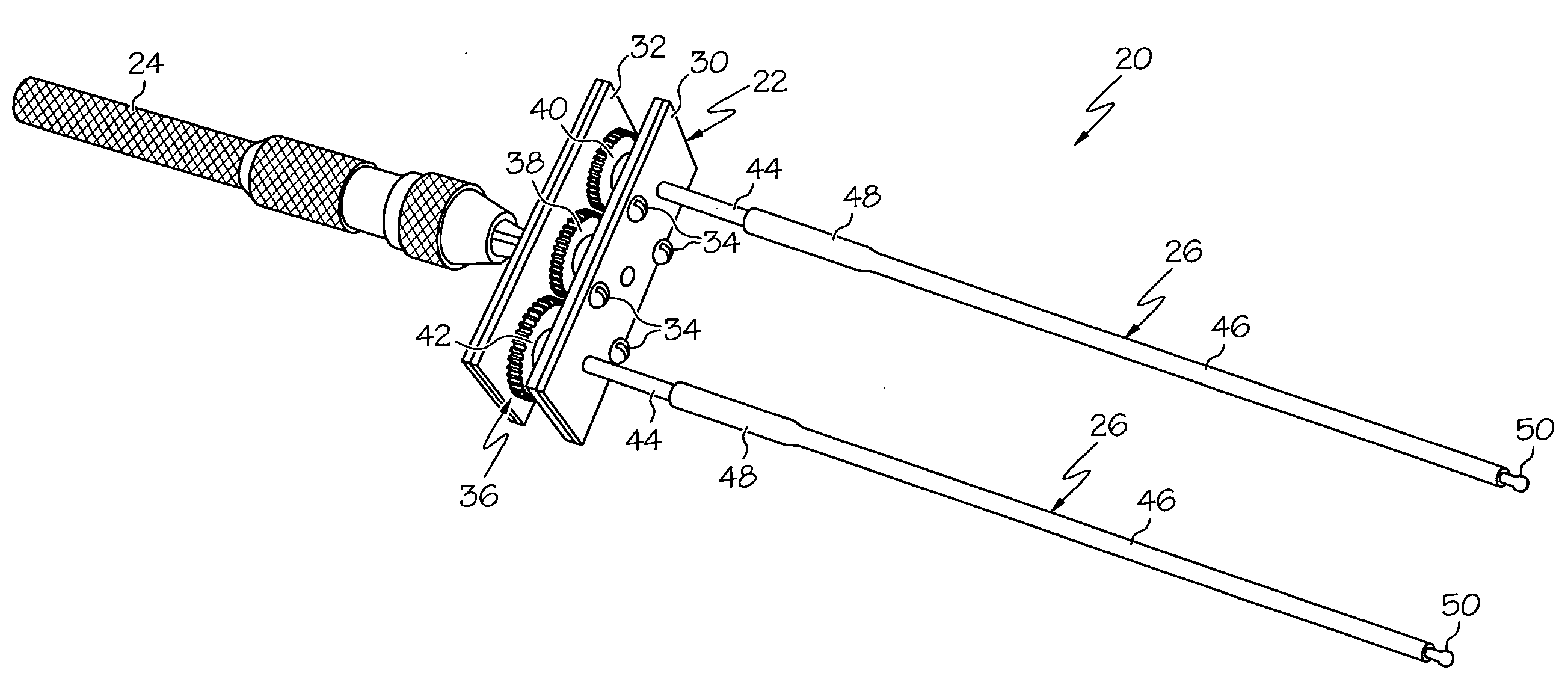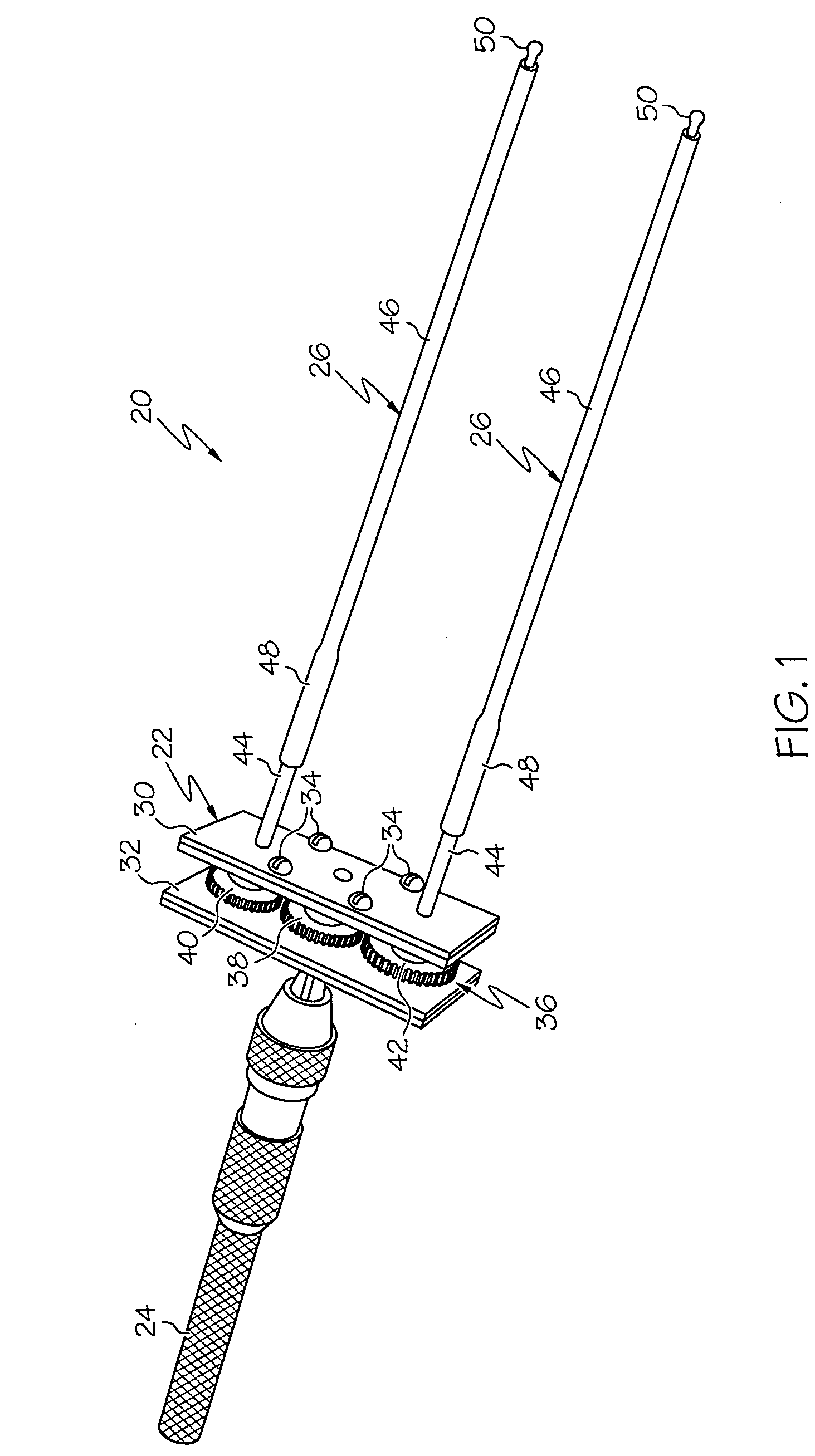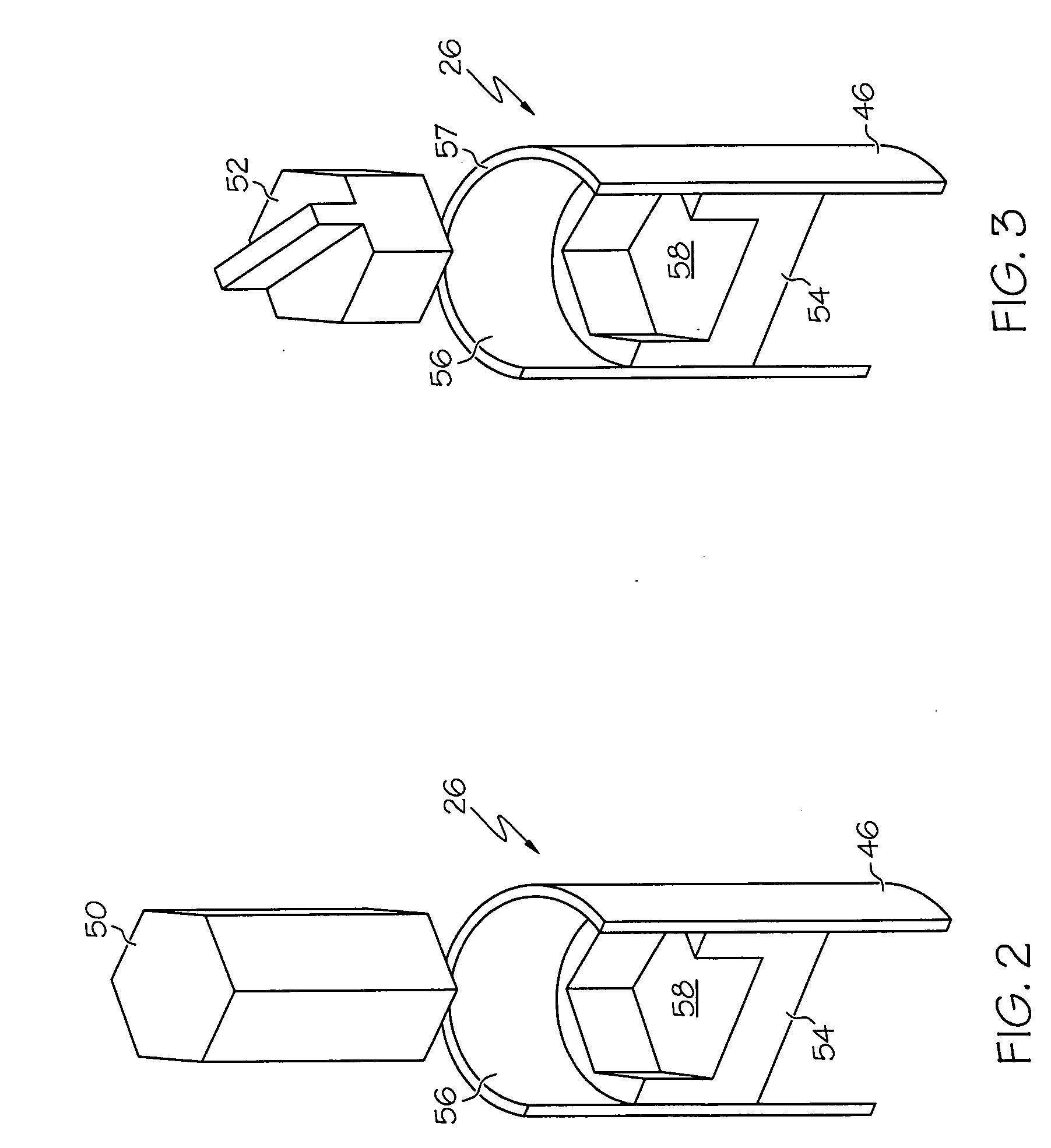Dual screwdriver adaptable to connector assemblies of different types and sizes
- Summary
- Abstract
- Description
- Claims
- Application Information
AI Technical Summary
Problems solved by technology
Method used
Image
Examples
Embodiment Construction
[0014]The following Detailed Description is merely exemplary in nature and is not intended to limit the invention or the application and uses of the invention. Furthermore, there is no intention to be bound by any theory presented in the preceding Background or the following Detailed Description.
[0015]FIG. 1 is an isometric view of a dual screwdriver 20 in accordance with an exemplary embodiment. Dual screwdriver 20 includes a housing 22, a user input 24, a first manually-bendable shaft 26, and a second manually-bendable shaft 28. Housing 22, in turn, includes a face plate 30 and a back plate 32, which are fixedly joined together utilizing a number of fasteners 34 (e.g., bolts). User input 24 is rotatably coupled to back plate 32 and extends away therefrom in a first direction, and first and second manually-bendable shafts 26 and 28 are each rotatably coupled to face plate 30 and extend away therefrom in a second opposing direction. A gear train 36 is disposed within housing 22 and ...
PUM
 Login to View More
Login to View More Abstract
Description
Claims
Application Information
 Login to View More
Login to View More - R&D
- Intellectual Property
- Life Sciences
- Materials
- Tech Scout
- Unparalleled Data Quality
- Higher Quality Content
- 60% Fewer Hallucinations
Browse by: Latest US Patents, China's latest patents, Technical Efficacy Thesaurus, Application Domain, Technology Topic, Popular Technical Reports.
© 2025 PatSnap. All rights reserved.Legal|Privacy policy|Modern Slavery Act Transparency Statement|Sitemap|About US| Contact US: help@patsnap.com



